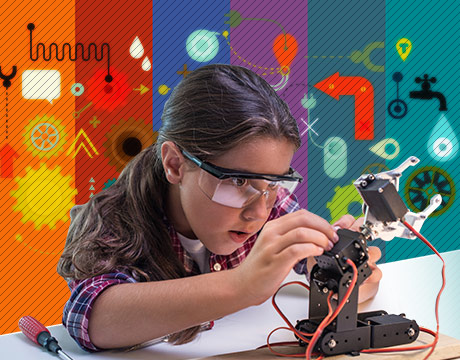How to Homeschool Engineering Students, Part 1
How to Homeschool Engineering Students, Part 1


What do a jet engine, an 8-track tape, and a peanut have in common? For one, they were all associated with inventors and engineers who received at least part of their education at home rather than a traditional school. Those innovators – Sir Frank Whittle, Bill Lear, and George Washington Carver – join the ranks of technology titans like Thomas Edison who for one reason or another forsook the traditional educational track to a science or engineering degree to pursue their own pathway to professional achievement.
Whether to provide all of a child’s education or to augment formal coursework, homeschooling was fairly common during much of the nation’s history. The tradition of compulsory schooling outside the home dates to colonial Massachusetts.
Over the next 300 years, the idea spread slowly across the growing nation in fits and starts amid changing attitudes toward immigration, church-and-state separation, and child labor practices. But by the early twentieth century, the nationwide paradigm of mandatory attendance at an accredited institution had become entrenched in the ideal of America as the land of opportunity for all. Homeschooling resurfaced in the 1980s, fueled by the evangelical Christian movement’s growing political clout. More and more U.S. school districts increasingly recognized homeschooling as a legitimate alternative to classroom instruction for families uncomfortable with the constraints of the modern secular curriculum.
For You: A Better Approach to Teaching STEM
Homeschooling today is in transition. For one thing, it’s getting more popular every year. According to the National Center for Education Statistics, 1.77 million children – about 3% of the school-age population – are currently homeschooled. And far fewer families today try homeschooling for religious reasons. NCES says more than 90% of families in the most recent survey cited the environment of their previous school as the main factor behind the switch.
Engineering is a demanding profession that places high value on advanced academic degrees. Most homeschool parents find it a tremendous challenge to prepare their learners for college-level coursework in math and science. On the other hand, homeschooling may provide the ideal environment for many technologically precocious kids to develop leverage their own curiosity and learning style into academic and career success.
For an engineering profession striving to increase the size and diversity of its future workforce, the homeschool movement poses important questions. Are homeschooled children being introduced to STEM subjects early enough? Are homeschoolers adequately positioned for college and career success? How will growth in homeschooling impact the number of women and minorities in STEM careers?
These questions are impossible to answer but one thing is certain. Keeping homeschool kids on track for an engineering degree puts a heavy burden on parents and tutors. Fortunately, innovative STEM education resources are proliferating on the web and in communities across the nation. Here is a small sampling for engineer parents who may be considering this option for their kids.
Read Part 2 of “STEM Education Hits Home” for the list of top curriculum resources and teaching ideas.
Michael MacRae is an independent writer.



